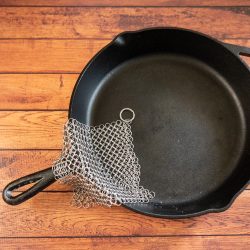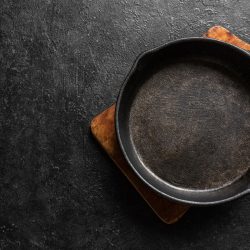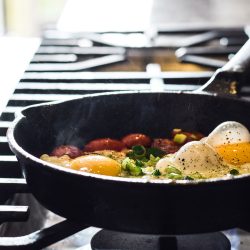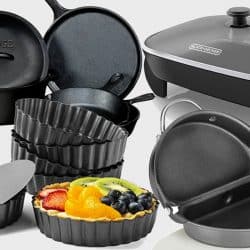Many recipes call for a combination of cooking on the stovetop and in the oven. But can you use the same pan for both? Furthermore, how do you know which pans are oven-safe and which aren't? We've done the research to bring you closure to this culinary conundrum.
Many pans are oven safe, especially those made entirely from stainless steel, cast iron, or carbon steel. Oven-safe pans with non-stick coatings should not be used at temperatures above the manufacturer's recommendation.
To know if your pan is oven-safe, the first place to check is the handle. Pans with metal handles are generally oven-safe. However, pans with handles made of plastic or wood should not go in the oven. Most silicone handles are oven-safe up to 350º Fahrenheit, but it is better to remove the silicone handle when possible.
In this article, we'll take a look at oven-safe pans in various styles as well as pans that can be considered semi-safe for oven use. We'll also see how silicone fares in the oven and even a few recipes that call for cooking on the stove and the oven in the same pan. Read on to learn more!
![]()
What Pans Are Oven Safe?
An oven-safe pan has double the functionality of its stove-tethered counterparts. That's one reason why many home cooks and professional chefs prefer oven-safe pans.
Fortunately, there are a lot of oven-safe pans on the market. Unfortunately, there are also a lot of pans that aren't, which is why it's important to know what to look for.
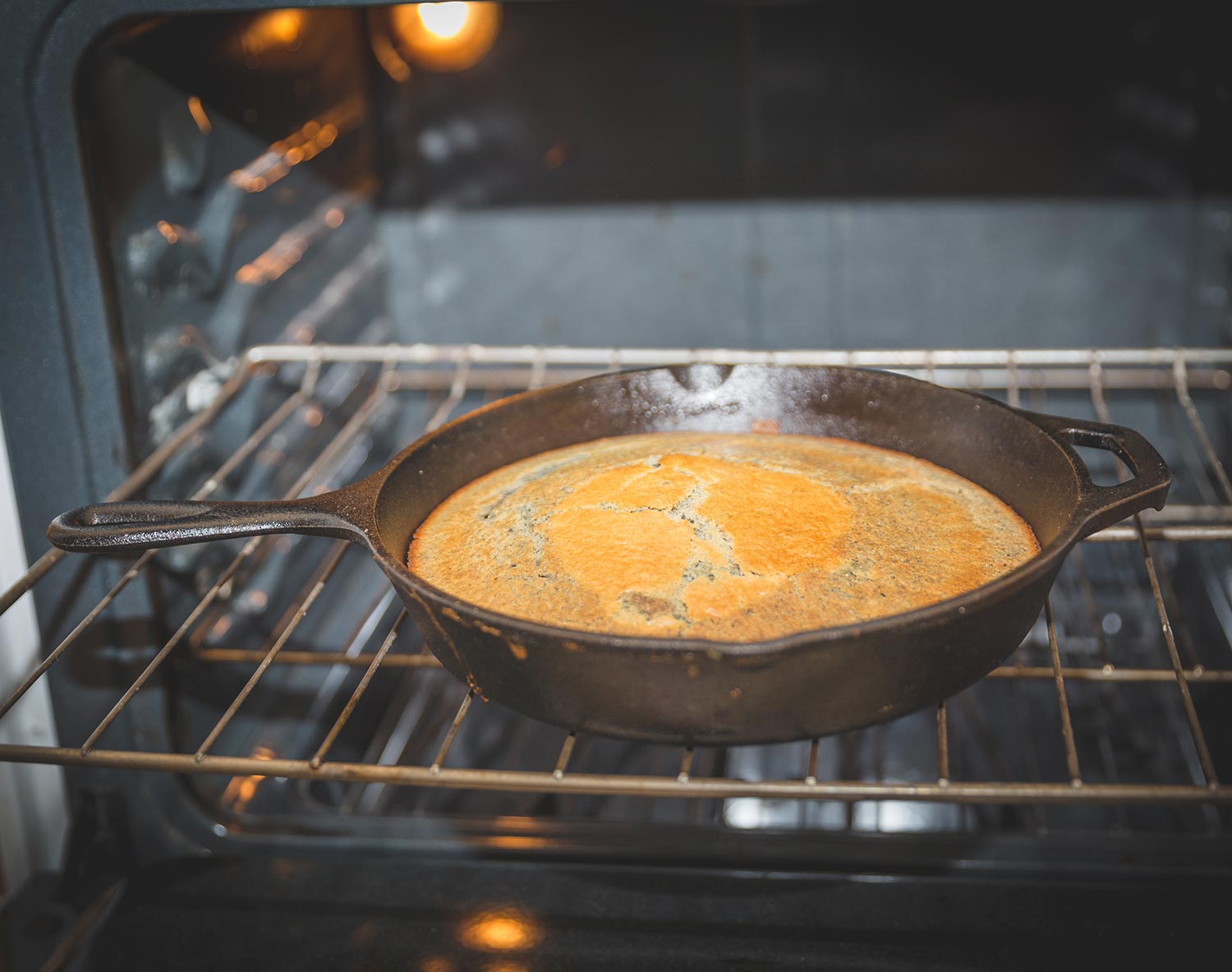
When shopping for an oven-safe pan, avoid anything with a plastic handle, although there are some exceptions for heat-stable plastics. Plastic can melt in the oven and even create harmful fumes when burned.
You should also avoid wooden handles. Pans with wooden handles look nice and work great on the stove. However, in the oven, the wood releases moisture, which will cause the handle to shrink. At high enough temperatures, the wood can even burn. Instead, play it safe and opt for a pan with metal handles.
Let's look at some of the top types of pans that are oven safe!
Stainless Steel
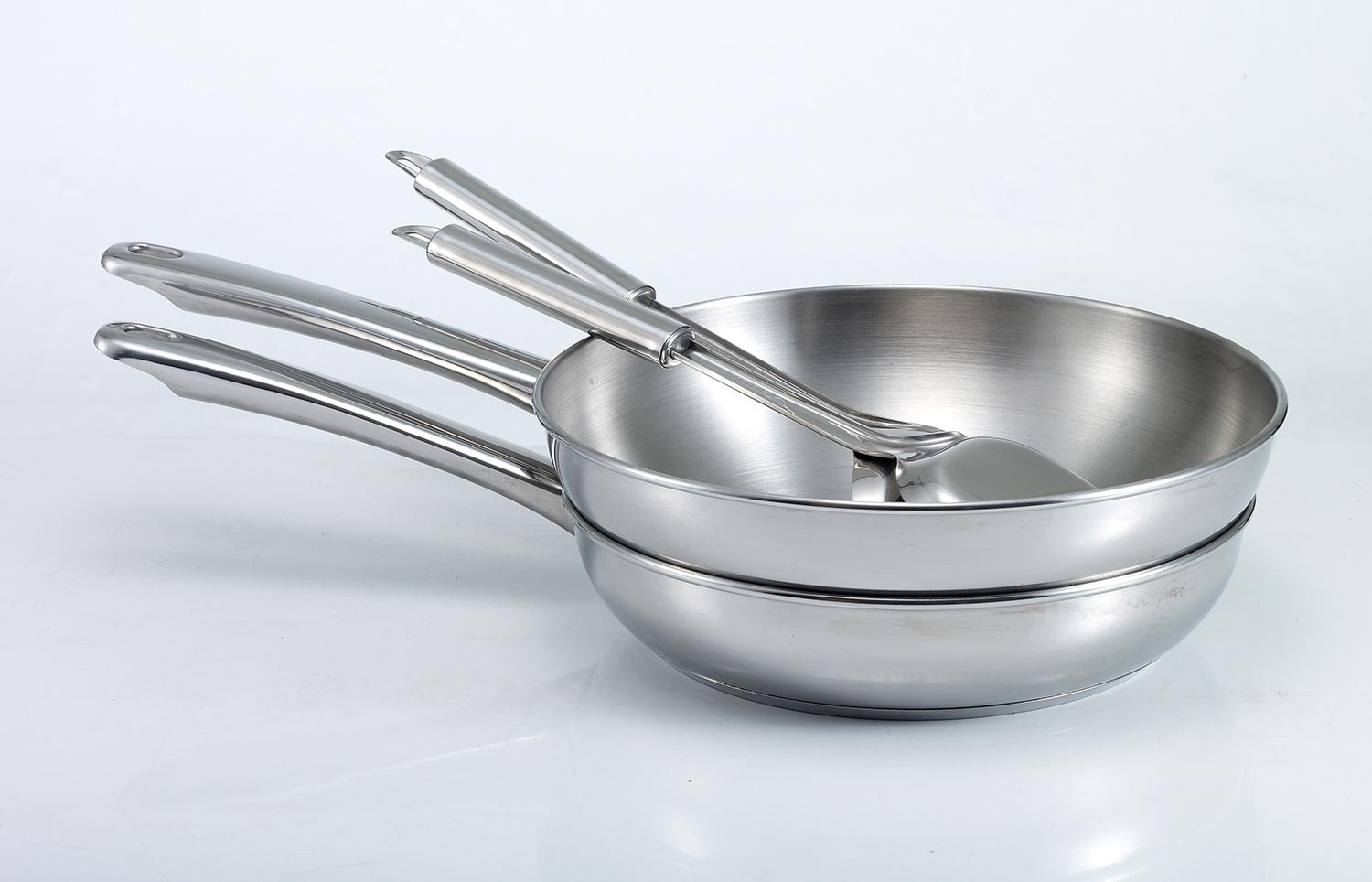
Stainless steel pans are a go-to in both professional and home kitchens. They are strong, durable, low-maintenance, and easy to use. To top it off, their shiny sheen looks great!
Most stainless steel pans also use stainless steel handles. This is perfect if you're looking for an oven-safe pan.
All-Clad is one of the top brands in stainless steel cookware. Their try-ply stainless steel pans are made of three layers: two stainless steel layers and an aluminum core to help with even heating.
Click here to see this 12-inch All-Clad pan on Amazon.
All-Clad's quality and reputation do come at a premium. You can expect to pay more for these pans than other stainless steel options. However, with proper maintenance, they can last you a lifetime or even generations.
If you want a thriftier option, there are other brands that offer similar products. The 8-inch stainless steel pan from Müeller below also features an aluminum core, but it comes at a fraction of the price of an All-Clad pan.
Click here to see this stainless steel pan from Müeller on Amazon.
Cast Iron
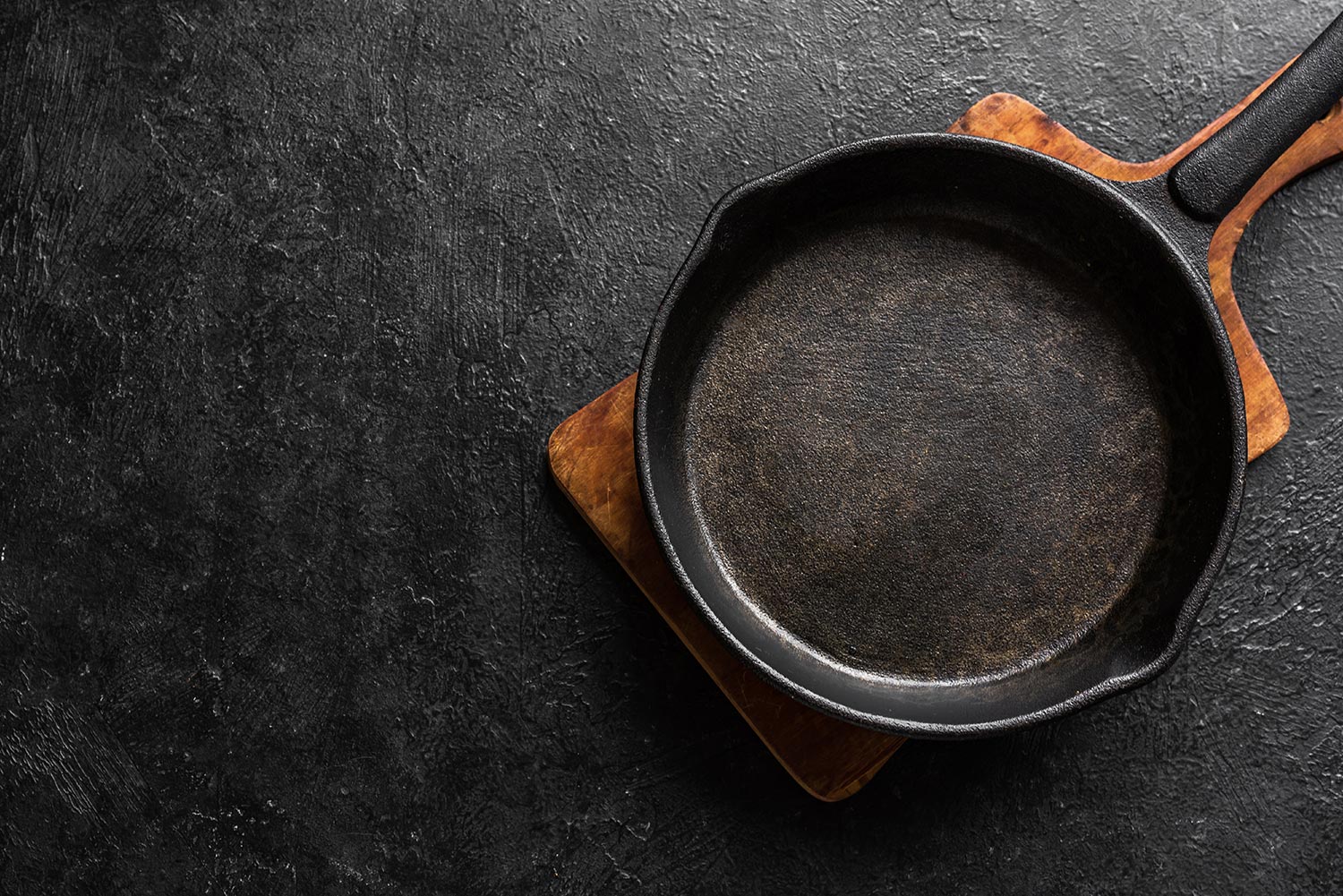
Cast iron pans may look rustic and old-fashioned, but they've regained a lot of popularity over the past several years. These pans are heavy-duty and, when properly seasoned, have a non-stick finish that is safe at searing temperatures.
They are also more affordable than stainless steel pans. The flip side of that is that they do require more maintenance and care than stainless steel. They are also significantly heavier, so sauteeing with a cast iron pan may leave you looking like Popeye.
Lodge is one of the best-known brands in cast iron cookware. However, their reputation hasn't come at the cost of rising prices. Lodge pans are still among the most affordable on the market.
Click here to see this 10-1/4-inch cast iron skillet from Lodge on Amazon.
Carbon Steel

Carbon steel splits the difference between stainless steel and cast iron. They are lighter than cast iron but heavier than stainless steel. They have the smooth look of stainless steel, but the dark seasoning of cast iron.
In fact, they are seasoned in the same way as cast iron. This means that they require some care and maintenance, but also that they will develop a non-stick surface that is perfectly oven safe.
Price-wise, they also typically fall somewhere between cast iron and stainless steel, though top brands will lean on the higher side. One such brand is France-based de Buyer. Their "Mineral B" pans are made of carbon steel and will generally cost you less than a similarly-sized stainless steel pan from a top brand.
Click here to see this de Buyer carbon steel pan on Amazon.
Unlike Lodge, de Buyer does not pre-season their pans. Instead, it is coated in beeswax to protect it. When you get a new de Buyer pan, you will need to remove the wax and season your pan before using it.
There are different methods for seasoning a new carbon steel pan. Watch the video below for a breakdown of
how to remove the wax, season, and use your new carbon steel pan.
Non-Stick Pans
While the pans that we've seen so far are all solidly oven-safe, non-stick pans are more of a grey area. One reason for this is that these pans are much more likely to have plastic handles. As mentioned before, most plastic handles aren't oven-safe. If you have a pan with a plastic handle, we recommend playing it safe and sticking to the stovetop.
However, there are many non-stick pans that have metal handles on the market. With these, the handle isn't the issue, but the non-stick coating can be.
When the non-stick coating is heated beyond a certain point, it can become damaged and even release toxic fumes. Modern non-stick coatings are more stable than those from back in the 1950s. Still, Teflon, a leading brand in non-stick cookware, warns against using their non-stick pans in ovens above 500º Fahrenheit (260º Celsius).
Other brands make different recommendations. The pan below, from OXO, is safe for oven use up to 430º Fahrenheit (220º Celsius).
Click here to see this 12-inch non-stick pan on Amazon.
Be sure to check the temperature rating for your specific pan. If you are ever unsure, play it safe and keep your pan out of the oven.
Learn more about this topic in our in-depth article:
Are silicone handles oven-safe?
![]()
In terms of oven safety, silicone handles are similar to non-stick pans. Whether the silicone handle in question is oven-safe or not will depend on the manufacturer and the temperature.
Many pans have silicone handles that can slip on and off of their metal handle. If this is the case for your pan, your best bet is to simply slip the silicone off when your pan is in the oven.
For pans with built-in silicone handles, check if there are any temperature guidelines. Even bakeware with silicone handles is only rated for a certain temperature range. In the case of these baking trays, they are oven-safe u to 446º Fahrenheit.
Click here to see these baking trays with silicone handles on Amazon.
While silicone won't burn at the temperatures reached in your oven, it can become damaged or brittle. To make your pans last as long as possible, always follow the manufacturer's instructions.
Uses for Oven Safe Pans
Now that you've gone through the trouble of verifying that your pan is oven-safe, you'll want to make the most of it. Of course, you can use these pans for cooking things on the stovetop or the oven. But what about both?
There are many recipes and techniques that call for oven-safe pans so they can move between the oven and stovetop safely. Here are just two of the best.
Steak
One of the best uses for an oven-safe cast iron pan is a perfectly seared steak. While it's possible to get a great steak without introducing the oven into the equation at all, a brief trip to the oven at high heat is great for thicker cuts, like a thick ribeye.
In the video below, from Food Network's classic show Good Eats, Alton Brown shows how to use your stove, your oven, and a cast iron pan to make a mouthwatering steak in no time at all.
Frittata
Want to make omelets but need to feed a crowd? The frittata is the answer. This Italian egg dish is a great way to clear out leftovers from your fridge and turn them into a satisfying meal.
The classic frittata method calls for starting your eggs on the stove and then moving them into the oven, which is why an oven-safe pan is a must. Because eggs are so sticky, we'd recommend going with an oven-safe non-stick pan. If your cast iron or carbon steel pan is very well seasoned, it may also be up to the task. Just remember that eggs still sometimes stick and burn to these pans.
The video below, from Joshua Weissman, shows several variations on frittatas, a basic frittata, a fancy one, then finally culminating in a frittata sandwich. Learn the technique so you can follow his recipes or just use them for inspiration.
Wrapping Up
While many pans are oven-safe, you'll always want to be doubly sure before baking with yours. Stainless steel, cast iron, and carbon steel are your best bets and many non-stick pans are oven-safe too. Just make sure to avoid putting pans with plastic or wooden handles in the oven and check the temperature rating for your pans with non-stick or silicone components.
If you found this article helpful, check out these informative pieces:
What Kind of Plates are Oven-Safe?







